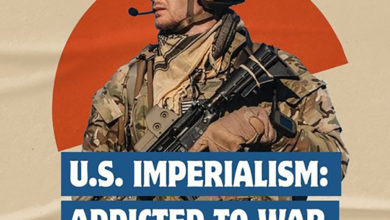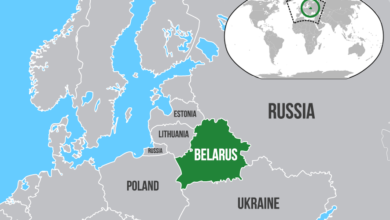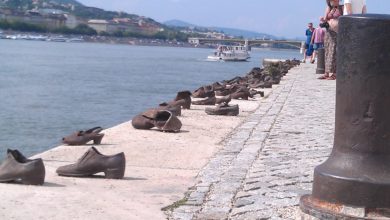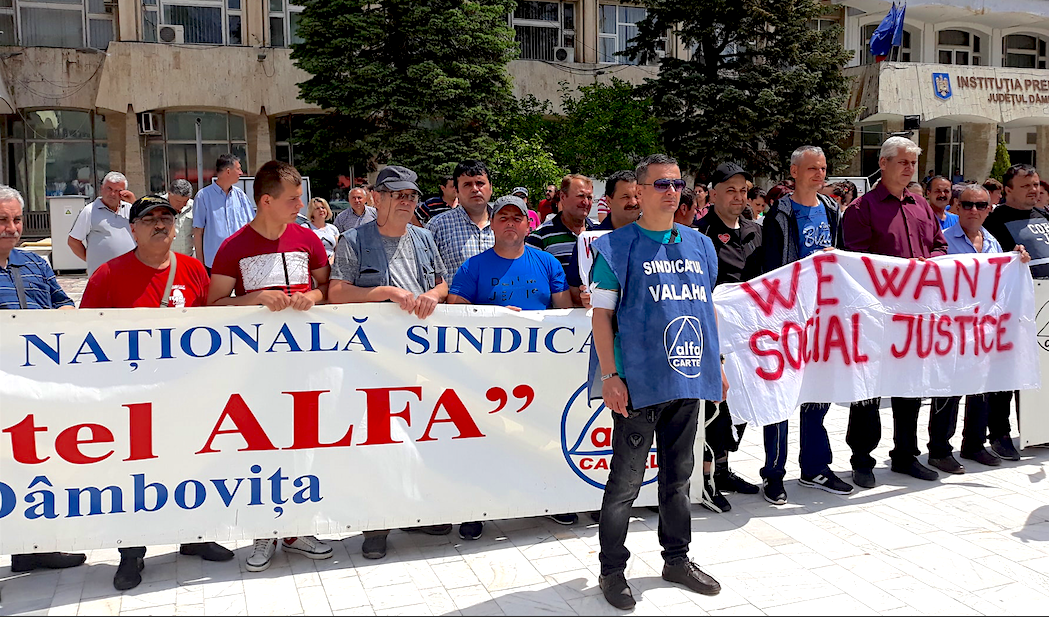Delivered by Monica Ruiz on behalf of the Party for Socialism and Liberation’s National Committee at the International Communist Seminar held in Brussels, Belgium May 15-17, 2009.
Comrades,
The central issue before this conference relates to building, strengthening and reinforcing organization among young communists.
This is a big and complex subject and we would like to share a few of our views on it. Since we are based in the United States, we will restrict our comments to our own experiences and some lessons we have drawn from those experiences. Many of them are particularized based on the realities of society and the class struggle in the United States. Some have a wider and broader applicability.
First, a word about our Party the PSL. We are a relatively new organization. We are not quite five years old. Some of the core cadre who formed the Party had been active in the communist movement and in the broader U.S. mass movement for many decades. Our Party is the anchor of the ANSWER Coalition, which continues to function as the largest anti-imperialist coalition in the U.S. anti-war movement.
The composition of the PSL today, after just under five years of organizing, is predominantly young workers and students. Even the student members are primarily from working-class backgrounds; many have full-time jobs in addition to being full-time students. The PSL is growing dynamically and this growth is almost entirely among working-class youth.
We recognized when we formed our Party that a central issue testing the viability of our organization would be our capacity to recruit, train and consolidate a new generation of young communists. Any genuine communist party seeks to develop cadre from all age groups, but a true test of its viability is its capacity to develop a large number of young cadre who can exercise authentic leadership for other young people and for the working class as a whole.
The first question for us—and we think this is a question for all parties—is: Toward which section of the youth do we orient? Do we aim towards the youth from the “educated” middle class and upper-middle class? Or do we focus on those from working-class, poor and oppressed communities: This has been a dividing line within the U.S. socialist and progressive movement.
While we have successfully organized among various class strata among young people, we made a decision early on to focus our attention with the more oppressed sections of the working class. Even where we had a base of operations in such institutions of privilege as Columbia University, the focus of our Party’s work was among students who were predominantly working-class Latinos who led successful mass actions against racism, war and immigrant bashing.
The vast majority of our work among young people is with those who are low paid; those struggling to make ends meet; those who are helping feed their families; those who can barely pay tuition even in the “public” colleges; and those who face routine police brutality, murder and daily harassment. Violent police harassment is indeed routine, especially for Black and Latino youth.
For instance, last year in New York City, where I am a PSL organizer, the police engaged in what is called “stop and frisk” of more than 520,000 people. Most were young, and 80 percent of those stopped were Black and Latino. The police stop these youth for no reason, pat them down and search them. These young people are then arrested for the smallest infraction. More than 6 million people in the United States are now in the “system,” meaning either in prison, jail, on parole or on probation. They are disproportionately Black and Latino youth.
Police killings are epidemic. Prior to coming to this conference, I was working with the family of Kenny Lazo. Kenny was a 24 year-old worker and the father of a four-year-old son. He was stopped for what appears to be a traffic violation and while he was in police custody—while he was handcuffed and helpless—he was beaten to death. His skull was crushed with repeated blows from flashlights. We are working with his family to stage protests demanding that the police be arrested for his brutal murder. But the police have been cleared, as they are in 99.9 percent of these cases. This is not an exceptional story at all. This is a reality for young people in Black and Latino working-class communities in the United States.
To succeed in building organizations of young communists, we feel that we have to be in the daily struggles of working-class communities, not mainly in the hallowed halls of academia.
In the United States, 47 million people cannot go to the doctor when they are sick because they have no health insurance. This is true for the majority—yes, the majority—of young workers. We are orienting toward them.
This year, there will be an estimated 2.1 million families who will be forced out of their homes because they can’t keep up with their mortgage payments. In the last 10 years, more new homes were built than at any other time in U.S. history. Yet, due to the absurdity of capitalist “overproduction,” more than 3.5 million families will be driven from their homes and into the streets in just 2008 and 2009 alone. This crisis affects young workers disproportionately. First-time homeowners are the biggest group of the newly homeless. Again, we are orienting our mass organizing and agitation toward this strata.
In the Washington, D.C. metropolitan area, more than 25 percent of all families have received electricity shut-off notices from the private, for-profit utility companies who have doubled the price for electricity and heat at the very moment of mass layoffs. People are receiving electrical bills for over $1,000 per month. Who is losing their electricity? Again, it is disproportionately young, working-class families. To recruit these young workers, who are in crisis, into a communist organization, it is necessary to organize and mobilize around their immediate needs. Our Party has helped initiate a mass campaign to insist on a moratorium of all shut-offs of electricity and heat, and to demand a 50 percent rollback of utility rates.
There is another group of young people who we are aggressively reaching out to and assisting in their efforts to build mass class-based organizations. They are the active-duty soldiers, marines and recently returned military veterans of the Iraq and Afghanistan wars. More than 1.5 million people have served in the Iraq and Afghanistan wars and occupation. Today, due to the surge of extreme joblessness more young, working class people are enlisting in the 2 million-strong US armed forces. They are being sent to kill and be killed for imperialism. When they get home there are no jobs. Suicide rates of returning soldiers are at record levels. They are suffering all kinds of physical and psychological wounds. More than 30,000 have been wounded with profound life-changing injuries. When brain trauma injuries are included the number of wounded is well over 100,000. Two hundred thousand US military veterans from the Vietnam, Afghanistan and Iraq wars — live on the streets, homeless and suffering. More active duty troops and recently returned veterans are joining us in the struggle against imperialism. They are spreading the message of resistance. And many are, based on their first-hand experience with imperialist occupation, open to embracing the core message of revolutionary socialism including solidarity with the struggling people of Iraq and Afghanistan.
In the United States, there is a growing intensity to the class divide and to the mounting suffering of working-class communities, and especially among young working-class people. There are 20 million people who are either unemployed or severely under-employed. There are 2.5 million people who are in prison, more than any other society. There were 30,000 people who died from gun violence in the United States last year; that’s more than 80 each day. There are 1.6 million New Yorkers who are dependent on food charity every month to feed their families. The glaring brutality and cruelty of modern life in an advanced industrial society—one that has little in the way of social insurance or social welfare—seems to be a perfect breeding ground for Marxism, socialism and communism.
Yet, and I am sure the other comrades know this, U.S. society and its political discourse has been largely devoid of Marxist ideology and elementary socialist conclusions—even among progressive and struggling sectors.
We in the PSL have identified two principal tasks in the effort to build communist organization among young people: The first, as we have just discussed, is to locate the focus of our mobilization and agitation among working-class youth, and to deal concretely with their practical and pressing issues. The second is to raise up and aggressively fight for the Marxist conception of struggle in contrast to the various trends of bourgeois liberalism and, to a lesser degree, to anarchism.
Bourgeois liberalism, including some of its “radical” variations, has been actively promoted on U.S. college campuses and has gained certain traction in the last 10 years—among various radical and “socialist” trends.
The built-in assumption in U.S. politics is that the working class here—if it even exists—will remain dormant as a class.
According to these theories, there really is no U.S. working class; it cannot and will never unite as a class. In recent decades, the principal variant in the propaganda of “American Execptionalism” is the notion that society is divided into three basic strata: the rich, the middle class and the poor—again, no working class. It is also divided by gender and by sexual orientation. It is divided by ethnicity. And it is also divided by “race.” The bourgeoisie prefers the commonplace but false ideological construct known as race so as to ignore the political implications of recognition of an African-American nation oppressed by the capitalist class.
According to these various theories bound up with American Exceptionalism, there is no multinational U.S. working class. It is a fiction from Marxism, perhaps relevant elsewhere but certainly not in the United States.
Much of the university-based radicalism and the liberal/radical political movement of the recent decades embraced the core of this bourgeois theory by the further construct of “identity” politics. Each “constituency,” or sometimes a coalition of constituencies, mobilizes around their own oppression, and this mobilization is mainly aimed at recognition, inclusion, integration and resource allocation.
The capitalist class embraces this theoretical construct. It is a useful theory to them because it doesn’t threaten or even suggest that their hold on political or economic power is in dispute.
These “radical” theories, whose outer limits preach tolerance, sensitivity, diversity and justice, are perfectly acceptable to the capitalists even though it is the daily functioning of capitalist property relations that create intolerance, insensitivity and a myriad of oppressions based on nationality, gender and sexual orientation.
While comfortable with the foundational “theories” of identity politics, the bourgeoisie relentlessly wages ideological war against Marxism because its fundamental thesis is subversive to the continuing rule of capital.
Only Marxism offers a way out of the myriad of oppressions through the development of a class-wide offensive—uniting all oppressed sectors—with the aim of expropriating the wealth of the capitalists, and using it to meet the needs of society and all individuals. This too is the only realistic remedy or method to overcome the abundant layers of discrimination and inequalities that are the hallmark of class society.
This second task—engaging in ideological struggle for the promotion of core Marxist ideas—is critical. The overthrow of the government of the Soviet Union and the governments of Eastern Europe contributed to a major contraction of the influence of communist theory and to the weakening of elementary communist ideas among progressive sectors throughout the world. Liberalism, anarchism, and petit-bourgeois radicalism filled the void.
Without resorting to sterile sectarianism of any type, the communist movement must recognize and embrace the centrality of fighting various bourgeois ideological trends. The aggressive promotion of explicit communist ideas, combined with participation and leadership in the day-to-day struggles of working people, is critical to rebuilding the influence of communism among young people.
We thank the conference organizers for providing us the opportunity to share our views on this important subject.






